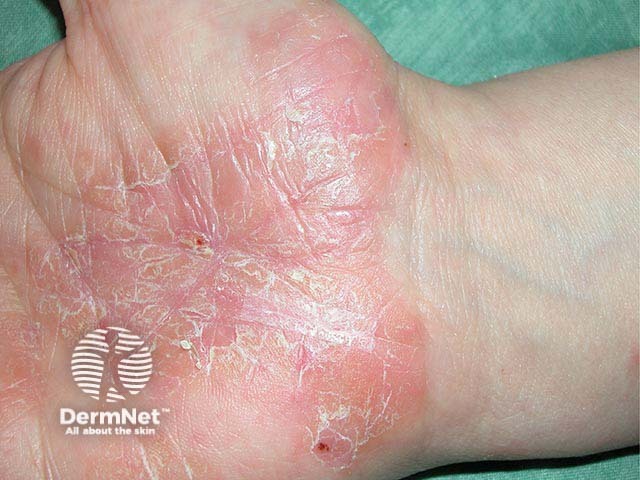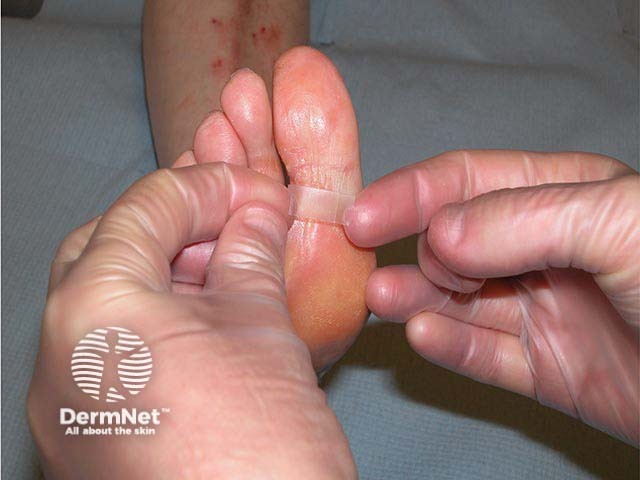Main menu
Common skin conditions

NEWS
Join DermNet PRO
Read more
Quick links
Author: Dr Ian Coulson, Consultant Dermatologist, Lancashire, United Kingdom (2023)
Edited by the DermNet content department
What is it? Uses Contraindications Dosing and application Benefits Disadvantages Side effects and risks
Steroid impregnated tapes are self-adhesive plastic tapes that have a topical corticosteroid, often fludroxycortide, impregnated into the adhesive. Pieces of tape are cut accurately to cover the condition requiring treatment, allowing accurate steroid delivery to exactly where it is needed, with the added benefit of tape occlusion, which enhances the efficacy of the steroid.
Fludroxycortide tape was previously known as Haelen® tape. Steroid impregnated tapes are not available in every country worldwide.

Fludroxycortide tape and clean scissors will be needed
Steroid impregnated tape is used for steroid responsive localised inflammatory dermatoses where a short course of a potent topical corticosteroid is beneficial.
Examples include:
As with all topical corticosteroids, steroid impregnated tape use should be avoided on:
Most tapes contain the topical corticosteroid fludroxycortide at a concentration of 4 micrograms per square centimetre.
The backing is a translucent plastic surgical tape. A protective silicone paper tape covers the adhesive and should be removed prior to application of the tape.
The period of time required will be determined by the condition requiring treatment, guided by your dermatologist.

The tape has been applied to the fissure and should be left on overnight

The tape can be removed after overnight application
The tape allows accurate localisation of the steroid and the occlusion improves its efficacy and the speed of action. It can be as effective as intralesional steroid injection, and obviously less painful to administer.
Occlusion may also minimise subconscious scratching (which can prolong and exacerbate conditions like lichen simplex and lichen planus).
The occlusive effect of the tape will allow the local adverse reactions of topical corticosteroids (see below) to occur more rapidly than an un-occluded steroid.
In general, side effects are uncommon and localised to the area where the tape has been used. They may include:
Approved datasheets are the official source of information for medicines, including approved uses, doses, and safety information. Check the individual datasheet in your country for information about medicines.
We suggest you refer to your national drug approval agency such as the Australian Therapeutic Goods Administration (TGA), US Food and Drug Administration (FDA), UK Medicines and Healthcare products regulatory agency (MHRA) / emc, and NZ Medsafe, or a national or state-approved formulary eg, the New Zealand Formulary (NZF) and New Zealand Formulary for Children (NZFC) and the British National Formulary (BNF) and British National Formulary for Children (BNFC).